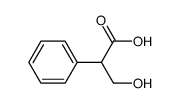| Structure | Name/CAS No. | Articles |
|---|---|---|
 |
trans-Styrylacetic acid
CAS:1914-58-5 |
|
 |
Tropic acid
CAS:552-63-6 |